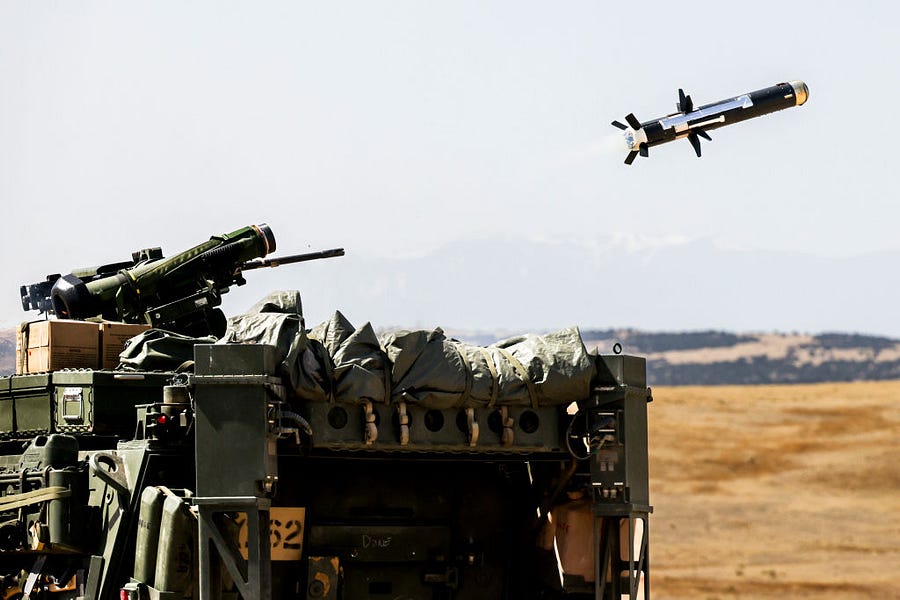Two weeks ago, the General Accountability Office (GAO) released a report on the defense industrial base. In this report, the GAO concluded that despite years of efforts, the Defense Department lacks direction and insight into mitigating industrial base risk—in other words, the risk that the Pentagon is likely to run out of bullets and weapons in a protracted, multifront war. The report’s proffered solution was for the Pentagon to combine four industrial base policies into one consolidated policy—a measure that seems entirely inadequate and lacking in urgency.
Inside the report, the GAO did succinctly identify five root causes as to why the industrial base is declining. Addressing these five with action and urgency is required—not simply consolidating problems without real solutions.
Uncertainty of spending is the first root cause identified by the GAO. There can be no industrial base if the Pentagon does not fork over the cash. Seems simple, but DOD’s current strategy is to avoid buying things today and instead invest in future technologies, which offer no guarantee of larger contracts that can keep the lights on and the employees hired.
Over the past 30+ years, DOD took a procurement holiday (1990s), bought for counterinsurgency warfare in Iraq and Afghanistan (2000s), slashed procurement as a result of across-the-board spending cuts mandated by the Budget Control Act (2010s), and is now divesting to invest (2020s). With policies like these, is it any wonder why it will take three years to build new Stingers and Javelins, of which we are running out supplying a contained regional war?
Fixing the industrial base will not be solved with another policy plan or new title. Instead DOD should change its strategy and dramatically increase procurement of items now. Congress is on board and, as Mackenzie Eaglen and James Mismash from AEI have noted, has added procurement funding each of the past few years. But there is still work to be done. Year-to-year congressional plus-ups do not enable businesses to plan for the future. Only a concerted effort to spend money on buying actual items will bring the industrial base back.
The second root cause is a decline in U.S. manufacturing capacity and capabilities. In many ways, this decline can be traced to DOD’s lack of procurement as a result of reduced defense funds. But it can also be traced to the Pentagon’s proclivity to contract-to-monopoly. In the name of efficiency that only a Marxist-like economic policy could appreciate, the Pentagon continues to award winner-take-all contracts that drive competition and entrepreneurship out of the market. The U.S. used to have multiple firms that produced advanced fighter jets—then the Joint Strike Fighter program came along and drove them all out of business. Perhaps Pentagon leadership should read the six-page chapter on creative destruction in Capitalism, Socialism and Democracy written by Joseph Schumpeter. His theory posits that “competition which commands a decisive cost or quality advantage, and which strikes not at the margins of the profits and the outputs of the existing firms but at their foundations and their very lives” is needed, which is the exact opposite of the current trend toward “contract-to-monopoly.”
The third root cause is simple: red tape. Rules, regulations, and executive orders all combine to make it extremely costly and inefficient to do business with the U.S. government, thus accelerating the decline of U.S. manufacturing capacity. The Pentagon has created a mote of protectionism around existing defense contractors who can afford the veritable army of people needed to comply with government regulations. Recently, a new class of entrepreneurs have tried to breach this mote, but they can be categorized as the “Billionaire Boys Club.” This club—which includes SpaceX, Palantir, C3.ai, and Anduril—have deep-pocketed funders with the bankroll and patience to take on the government, going as far as suing their potential government customers in order to enter the defense marketplace, as both SpaceX and Palantir did to different levels of success. Relying on the benevolence of these billionaires to force reform in DOD is probably not the best solution. Cutting 90 percent of the red tape to enable non-billionaire startups to compete is a better one. Maybe it is no surprise that both SpaceX and Palantir have been embraced by the Ukrainian military, which is not using complex acquisition rules in its war against the Russians.
The fourth root cause is China. From industrial espionage to unfair trade policies, the Chinese Communist Party is slowly but surely destroying U.S. domestic manufacturing capabilities. Govini, a relatively new data analytics firm, found that Chinese supplies make up 9 percent of industries critical to the Pentagon as of 2019, including specialty chemicals and telecommunications. Given Biden’s push to encourage “buy American” policies, AEI’s Bill Greenwalt and Dustin Walker continue to emphasize that we need to push our supply chain toward friendly nations, not away from them, so that we can focus on China. We can’t make everything at home, so it is crucial that what the Pentagon relies on from abroad comes from nations they can trust.
The final root cause is the decline of trade skills and STEM within the United States. The Reagan Institute’s recent report on manufacturing stated that the U.S. needs 500,000 new graduates of trade school and apprenticeship programs over the next decade. Simply put, our shipyards do not have the capacity to surge during wartime in order to repair or replace ships. It is no different for our aviation and ground systems. Even the Biden administration would like to produce more than two Columbia-class submarines a year, but U.S. industrial capacity can produce no more than that. Enticing a new generation of workers into the shipyards is difficult with erratic budgets that scare off new entrants in a field that is known to be hard, dangerous, and dirty. Providing commitments for long term employment prospects, along with higher pay, are likely ways to ensure we have the workforce we need.
America is built on a capitalist system that is founded in competition and long-term rewards. The Pentagon is built upon short-term budgeting decisions and, thanks to decades of underfunding, has moved away from competitive markets resulting from its attraction to the Homer-like sirens of efficiency offered by single source suppliers. The answer to rebuilding the arsenal of democracy is not consolidating policies, instead we need to buy more, stop contracting-to-monopoly, eliminate red tape, focus on eliminating China from our supply chains, and invest in the American workforce. If we do not do this, who is going to explain to the American public why we ran out of bullets after a few days of war against a peer competitor?
Maj. Gen. John Ferrari, U.S. Army (Ret.), is a visiting fellow at the American Enterprise Institute and is the former director of program analysis and evaluation for the U.S. Army.








Please note that we at The Dispatch hold ourselves, our work, and our commenters to a higher standard than other places on the internet. We welcome comments that foster genuine debate or discussion—including comments critical of us or our work—but responses that include ad hominem attacks on fellow Dispatch members or are intended to stoke fear and anger may be moderated.
You are currently using a limited time guest pass and do not have access to commenting. Consider subscribing to join the conversation.
With your membership, you only have the ability to comment on The Morning Dispatch articles. Consider upgrading to join the conversation everywhere.